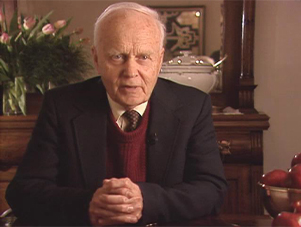
Joseph Chilton Pearce (1926-2016) is my hero. He was the one who first exposed me to the importance of the childhood environment, just a few weeks before the birth of my first child, way back in 1978. His whole life was devoted to this message.
Joe, as he likes to be called, was ahead of his time. He was ringing the bells about the importance of childhood in brain growth and development long before the current flood of confirming brain research about it.
He has written and spoken prodigiously over the years. All of it is accessible at Touch the Future. Here are three to wet your whistle:
Part of an interview with Michael Mendizza in which he explains the important order of development of the brain and how daycare can nurture and support this proper development by being an extension of mother’s bond.
“Daycare could, theoretically, be an extension of the bond. What is it the child needs at age 2 and 3? A warm, accepting, nurturing emotional environment. Why could that be given through a daycare situation? It certainly could be. It just isn’t at present because we’re not aware of the critial importance of it.”
Part of an interview with Michael Mendizza in which he explains that play is imagination. Play is the development of imagination. Play is a very high neural activity that begins to finctino very early in life – long before the ability to learn in abstract, symbolic fashion.
The state of authentic play is the state of true learning. And it’s unviersal.
Jow explains that Waldorf is an excellent example of an approach to schooling that is in alignment with the child’s natural developmental stages of body, emotions, imagination and spirit.
Maltreatment during childhood can lead to long-term changes in brain circuits that process fear, researchers say. This could help explain why children who suffer abuse are much more likely than others to develop problems like anxiety and depression later on.
Few features of humanity are more fascinating than creativity; and few fields are more dynamic now than neuroscience. Rex Jung is a neuropsychologist who puts the two together. He’s working on a cutting edge of science, exploring the differences and interplay between intelligence and creativity. He and his colleagues unsettle long-held beliefs about who is creative and who is not. And they’re seeing practical, often common-sense connections between creativity and family life, aging, and purpose.
For nearly half a century, Joseph Chilton Pearce has been probing the mysteries of the human mind. Part scholar, part scientist, part mystic, part itinerant teacher, Pearce keeps in close touch with the most brilliant men and women in each field. He creates a unique synthesis of their work and translates the results into a common language. This segment introduces Joseph’s ideas about the brain and how computer and tv education hurts our children.
“[Play is] not just superfluous. It’s a very valuable thing for childhood development. And we as a culture have to learn to use it properly and have to make sure our kids get plenty of it.”
– Jaak Panksepp, brains at play researcher
You’ll be a believer in the complexity of the brain after you see this!
How does consciousness change in history? Is it possible that we human beings who are soft wired for empathic destress… could actually extend our empathy to the entire human race, as an extended family? And to our fellow creatures as part of our extended evolutionary family? and to the biosphere as our common community? If it’s possible to image that, then we may be able ot save our species and save our planet.
To empathize is to civilize. To civilize is to empathize. (Golden Rule Schools)
Golden Rule Schools bring out our empathic sociability
Sir Ken Robinson makes an entertaining and profoundly moving case for creating an education system that nurtures (rather than underminds) creativity.
Named in Time Magazine’s 2006 list of 100 most influential people, Richie Davidson offers a new model for understanding our emotions — their origins, their power and their malleability. He has discovered that personality is composed of six basic emotional “styles,” including resilience, self-awareness, and attention. Our emotional fingerprint results from where on the continuum of each style we fall. He explains the brain circuits that underlie each style in order to give us a new model of the emotional brain, one that will even go so far as to affect the way we treat conditions like autism and depression. And, finally, he provides strategies we can use to change our own brains and emotions – if that is what we want to do.
111 East Myrtle Street
Hailey, ID 83333-5127